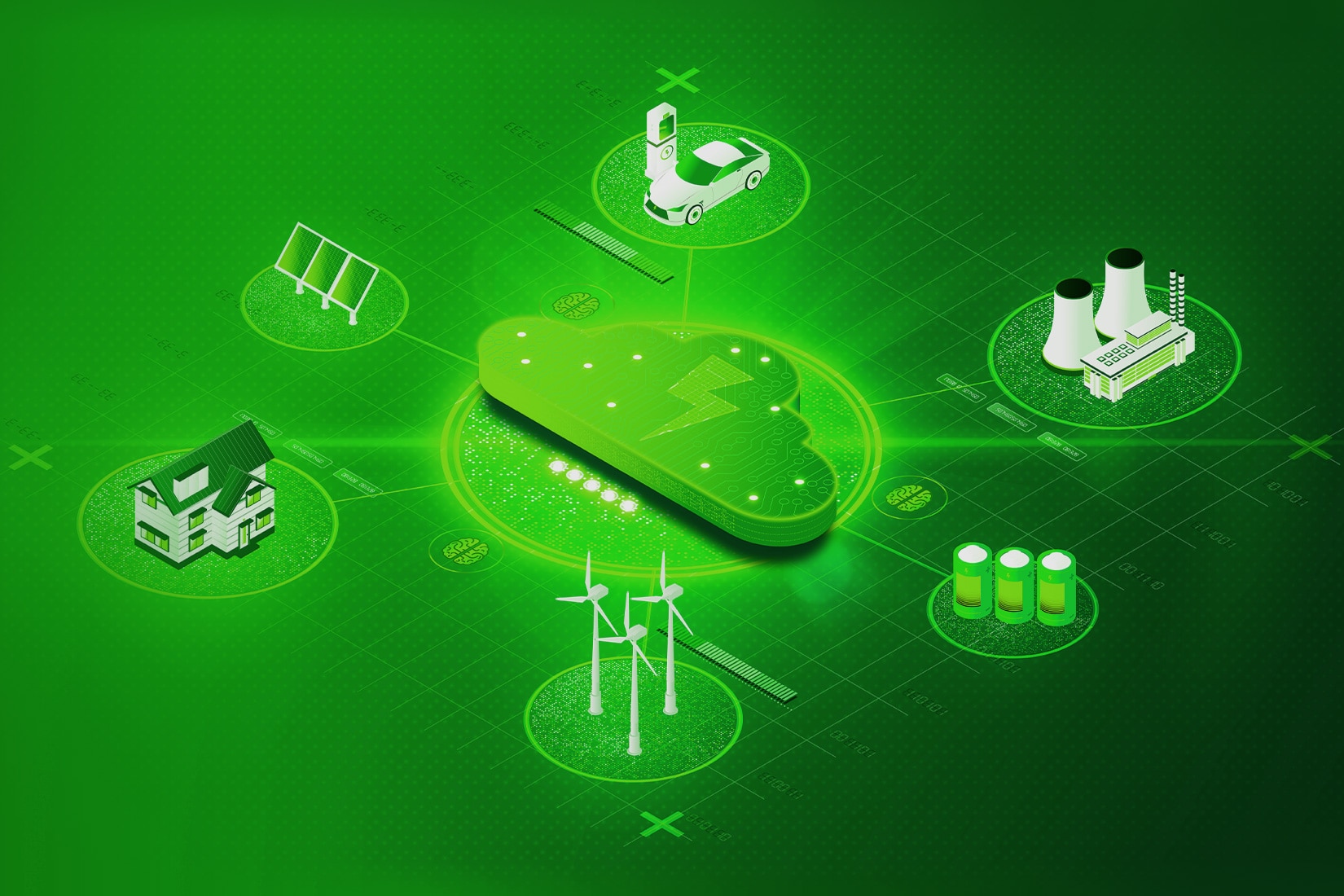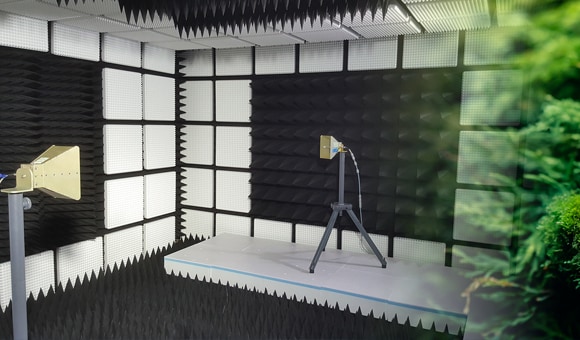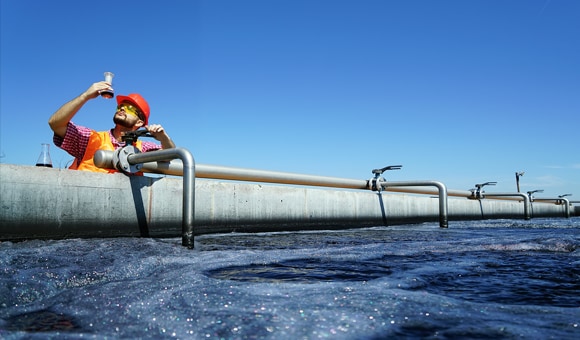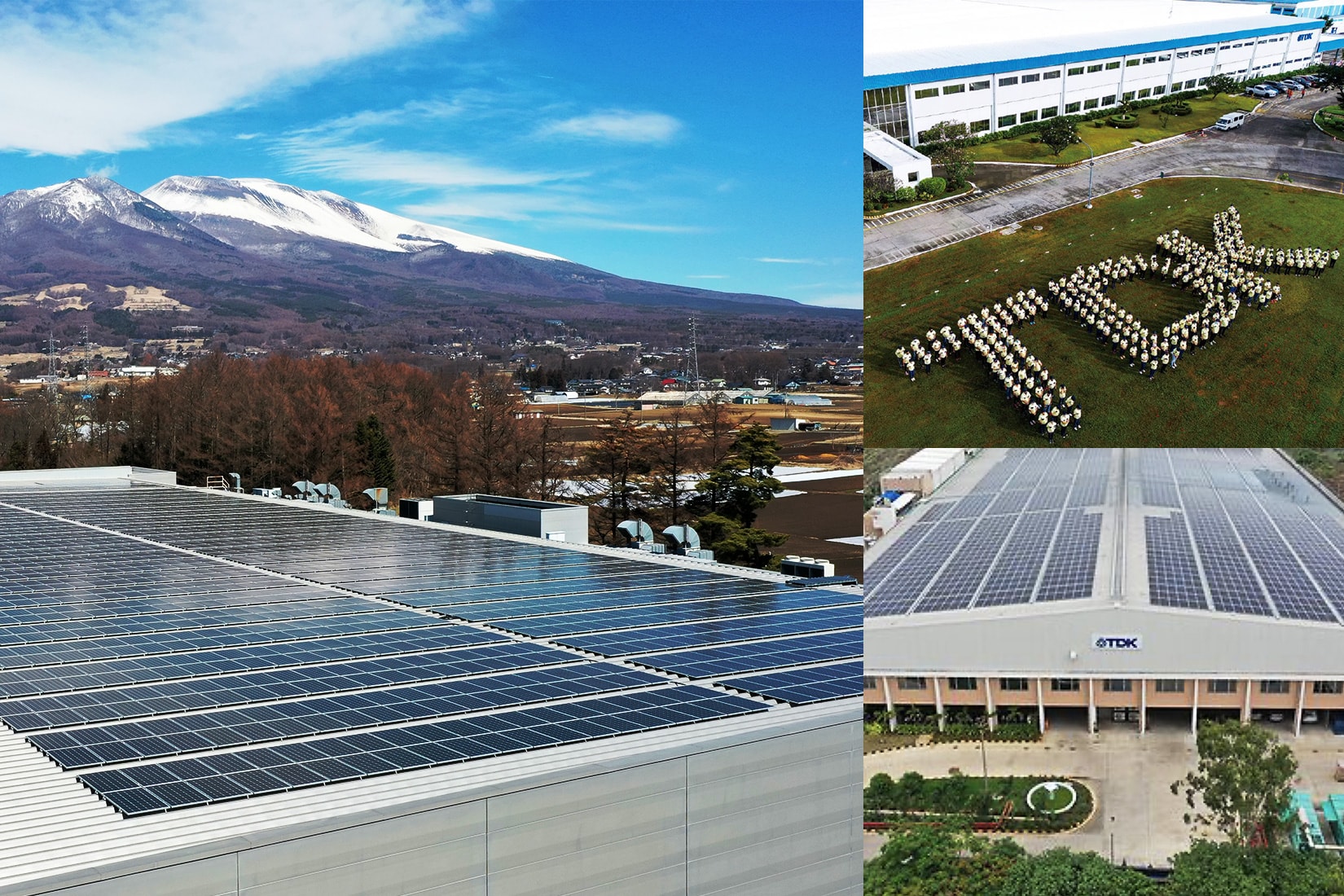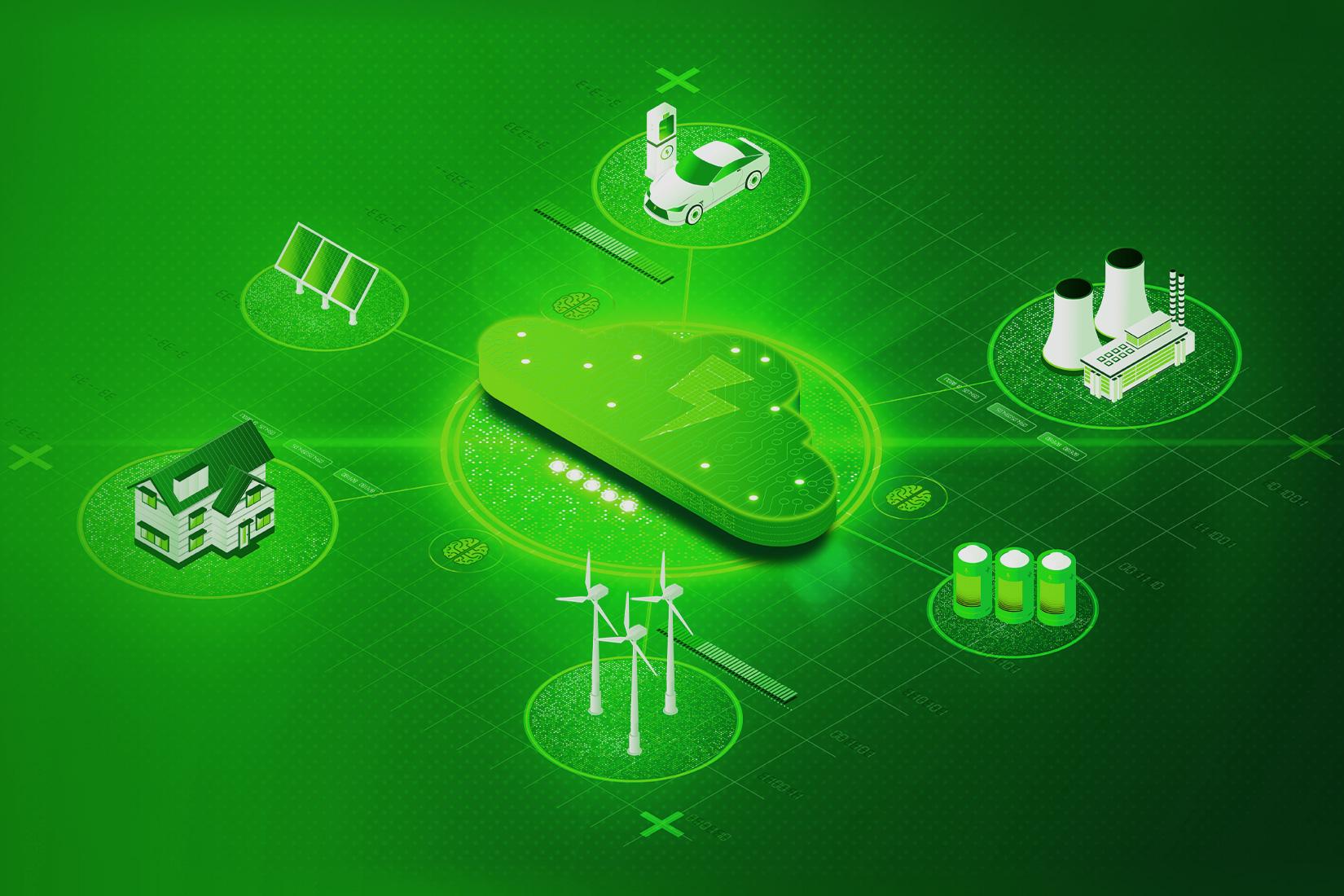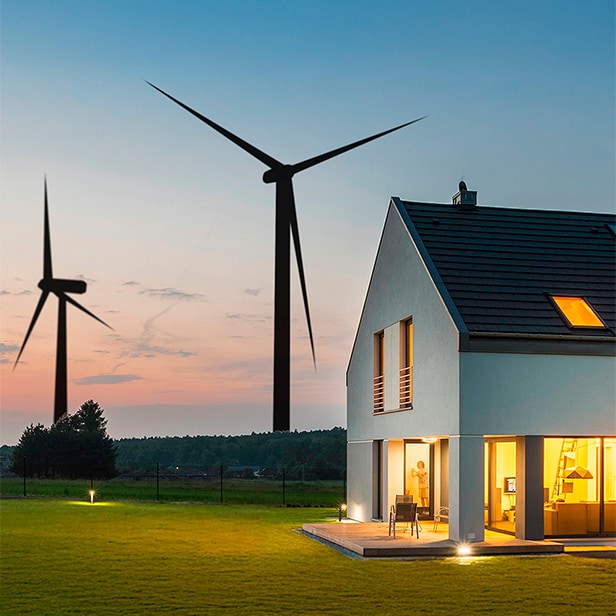

【Sustainability and TDK】
Bringing Energy to the Unelectrified: Pushing the Envelope of Fuel Cell Technology


As one of UN’s SDGs—“7: Ensure access to affordable, reliable, sustainable and modern energy for all”—stipulates, there still are many regions in the world that lack easy access to electricity. It is a grave problem that is hindering local economic growth. GenCell, an Israeli startup funded by TDK Ventures—the corporate venture capital (CVC) arm of the TDK Group—is hard at work on solutions to bring clean energy to unelectrified locales through the development of fuel cells*1 that use hydrogen and ammonia.
▶Related Article:
[Sustainability and TDK] The Technology Indispensable for Expanding Renewable Energy and Moving Toward a Decarbonized Society
Lack of electrification substantially hinders growth in developing countries
As of 2019, more than 750 million people do not have access to electricity, according to the International Energy Agency (IEA). In areas where power grids are inadequate, access to lighting, communication, healthcare, education and other opportunities are hampered, substantially hindering economic growth. In these areas, electricity is supplied mainly by diesel generators that burn fossil fuels, raising concerns about the environmental impact of CO2 emissions.

Israeli fuel cell startup GenCell, driven by its #SayNoToDiesel mission, develops fuel cells to provide clean energy to unelectrified places. CEO Rami Reshef explains, “Today, more than 1.2 million telecom towers, primarily in rural areas, are located where power grids are inadequate, many of which are said to be powered by diesel generators. By delivering emission-free*2 electricity to such areas, GenCell hopes to foster regional development and promote decarbonization at the same time.”
Overcoming the challenges in developing low-cost fuel cells
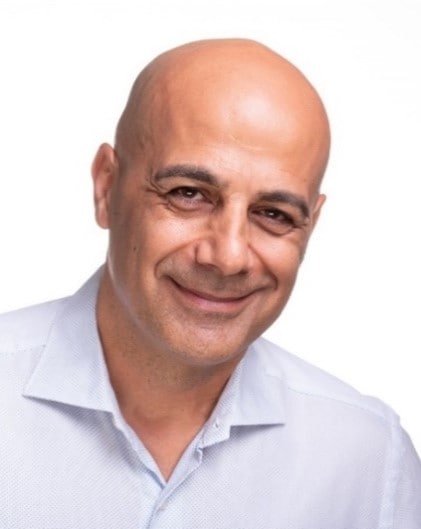
CEO, GenCell Ltd.
Fuel cells, which convert hydrogen to generate electricity, are drawing attention as a source of clean energy that is easy to maintain and does not emit greenhouse gases. However, two issues must be resolved before fuel cells can be widely adopted.
The first issue is the high production cost of fuel cells. This is because expensive metal catalysts like platinum are used to accelerate the chemical reactions in conventional fuel cells. The second issue is the expense of storing and handling hydrogen. Because hydrogen gas is light and voluminous, it requires substantial energy and financial resources to either compress the gas or cryogenically lower the temperature to -253⁰C in order to liquefy it so as to facilitate its transport. In fact, the majority of the expense of hydrogen usage is for infrastructure and transport.
To address these issues, GenCell has devised a patented method to manufacture fuel cells without any platinum. The company has created a process to mass-produce electrodes without noble metals, paving the way for the low-cost production of fuel cells. But the biggest breakthrough has been the development of a compact ammonia cracker that synthesizes hydrogen on-demand from liquid ammonia*3—ten times more efficiently than conventional methods. This enables the far simpler and more economical storage and transport of hydrogen in the form of ammonia, which is much more available compared to pure hydrogen, reducing storage and operational costs.
“By developing technology that allows us to extract hydrogen economically, we have successfully lowered the cost of using hydrogen fuel to a level the world had forecasted will only be achievable ten years from now. We have managed to overcome two barriers that had prevented fuel cells from becoming mainstream,” says Reshef.
“Say No To Diesel—We want to deliver emission-free electricity with our technology.”
Rami Rashef, CEO, Gencell Ltd.
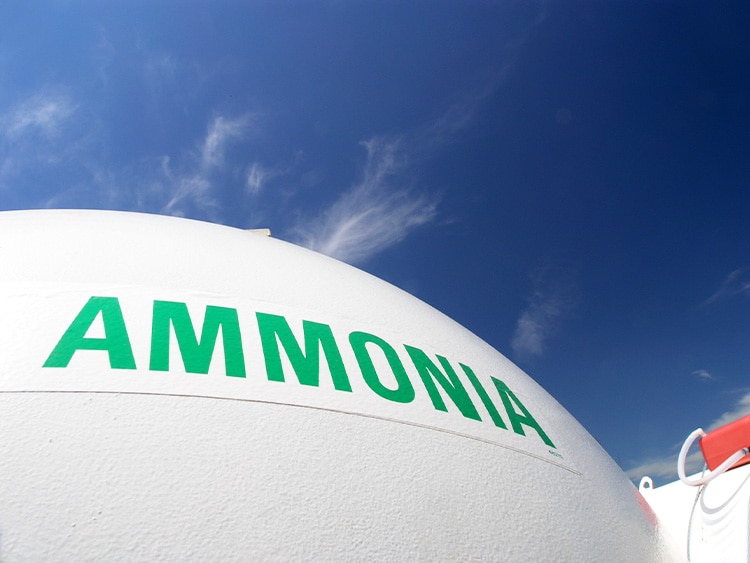
Green ammonia for even cleaner electrical power
GenCell is also working on a technology to economically produce “green ammonia”—ammonia that is made without emitting CO2 during the synthesis process by leveraging renewable energy sources. Once this technology is perfected, it will become possible to manufacture green ammonia independently of the grid, which in turn will supply the hydrogen that powers fuel cells—creating a totally green electrical power solution.
Reshef continued, “Our green ammonia-based power systems will be rugged, ultra-reliable, low-maintenance and emission-free. A single 12-ton ammonia tank will be able to power a telecom tower 24 hours a day for 365 days. By delivering clean energy to people in unelectrified areas, I believe we can ultimately help solve a wide range of educational, medical, economic and safety issues.”
Guided by its corporate motto, “Contribute to culture and industry through creativity,” TDK is engaged in its businesses to create a better world through technology. TDK Ventures, formed to accelerate TDK’s technology development and strengthen its growth strategy, assists startup companies around the world that harbor the potential to contribute to society through innovation in fields like energy, healthtech and mobility, including GenCell featured in this article. For more information, please visit the TDK Ventures website.
Off-grid fuel cell system utilizing ammonia
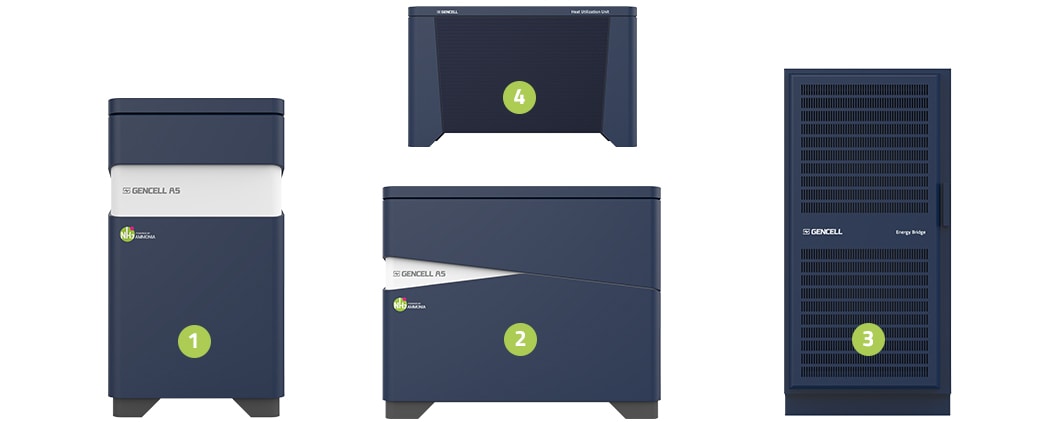
② 4 kW fuel cell generator
③ Energy bridge for regulating power output
④ Heat utilization unit for dissipating excess heat
Terminology
- Fuel cell: A device that uses hydrogen as fuel, having it react with oxygen in the air to generate electricity. It is attracting attention as a clean energy source that emits only water.
- Emission-free: Involving no emission of greenhouse gases like CO2 and nitrogen oxides (NOx), which cause climate change and lead to a variety of impacts.
- Ammonia: Ammonia can store energy very efficiently and be kept in liquid form at room temperature, among other advantages. Because it is mass-produced as a basic chemical and as a raw material for fertilizers, the facilities and the know-how on transporting and storing ammonia are abundantly available.


